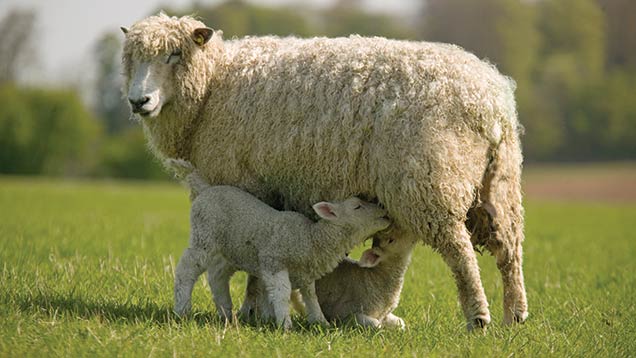Protect your flock now to prevent abortion storms and barren ewes

Farmers are being urged to get on top of diseases, which cause abortions and barreness in ewes, prior to tupping, after an analysis of 500 ewe blood samples revealed 80% of sheep were exposed to the toxoplasmosis parasite Toxoplasma gondi.
The samples taken during 2014 also found more than half (52%) of flocks had been exposed to Chlamydophila abortus, the bacteria which causes enzootic abortion (EAE) with 43% of flocks exposed to both organisms.
See also: Prevent abortion losses
The tests which were part of the subsidised MSD Animal Health’s Barren EweCheck and FlockCheck diagnostic service, highlight the widespread prevalence of these financially damaging diseases in the national flock.
Vet John Atkinson at MSD Animal Health, says any sheep producers who recorded a flock barren rate greater than 2% last season should talk to their vet for advice, even if diagnostic blood samples have not been taken.
“If either toxoplasmosis or EAE has been diagnosed in a flock, vaccination is the most effective way to help protect against these diseases for future years,” he says.
A toxoplasmosis vaccine is available that can protect the ewe against toxoplasmosis for at least two lambing seasons and can be given up until three weeks before tupping.
A vaccine for enzootic abortion is also available and helps protect the ewe for at least three years against EAE and can be given to ewe lambs intended for breeding from five months of age.
“Animals should be vaccinated at least four weeks prior to tupping,” Mr Atkinson advises.
Toxoplasmosis facts
- Causes abortions, barrenness, reabsorptions, mummified foetuses, stillbirths and weakly lambs.
- Sheep pick up the infection from the environment and so normal biosecurity measures are not enough to control the disease.
- Infected cats shed toxoplasma eggs in their faeces and sheep become infected when they ingest these eggs from contaminated pasture, feed and water.
Enzootic abortion facts
- Causes early lamb losses and can cause abortion storms affecting about 25% of ewes.
- Once a flock has the disease it is likely it will never disappear due to its persistence in carrier sheep.
- The disease usually arrives on farm through replacements and is passed on from ewe to ewe at lambing time.
- If an unvaccinated ewe is infected she will more than likely abort in the next pregnancy.
- Vaccination of already infected ewes reduces the risk of abortion and bacterial shedding thus reducing the chance of transmission to their lambs and the rest of the flock.
